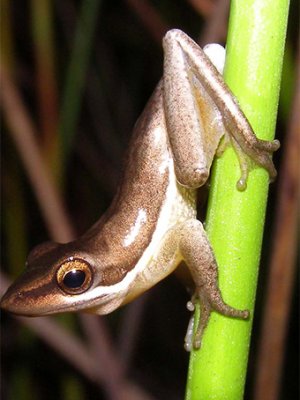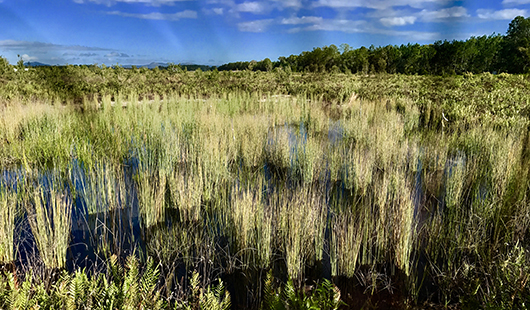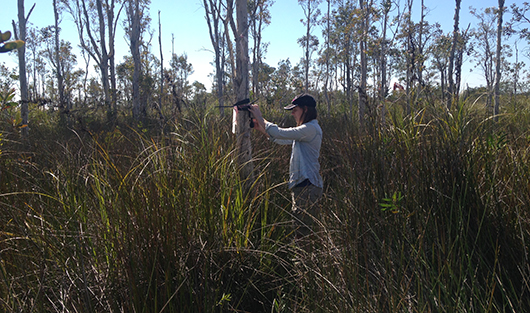
Sunshine Coast residents are being asked to tune in to the sounds of a local threatened frog population to help preserve the local biodiversity.
A joint University of Queensland and QUT project will arm locals from a new housing development near Caloundra with smart acoustic devices to monitor the native frog species including the wallum sedgefrog, which is listed as vulnerable.
UQ School of Biological Sciences Dr Berndt Janse van Rensburg and the research group are working closely with Stockland Development, Sunshine Coast Council and community stakeholders to address how to maintain biodiversity as urbanisation expands.
“The project focuses on threatened acid frog populations living in the Aura community environs, which will have 20,000 new residential dwellings, and more than 700 hectares of conservation and park areas at Bells Creek on the Sunshine Coast,” he said.
“Stockland has contributed $133,000 to the project and has already undertaken a huge mitigation effort to create habitats to conserve frog species living in the acid soils in this region.”
 Stockland Senior Environment and Community Development Manager Mark Stephens said the research program will engage with local schools, stakeholder groups and the broader community.
Stockland Senior Environment and Community Development Manager Mark Stephens said the research program will engage with local schools, stakeholder groups and the broader community.
“It will provide insights on how communities can be developed in ways that are sustainable, and protect and improve biodiversity values in our catchment regions,” Mr Stephens said.
The project will use non-intrusive battery and solar-powered bioacoustic monitors to reliably measure multi-species population processes - dispersal and species co-occurrence - and how these drive patterns in species composition and population sizes in newly-created habitat.
This will act as a model for future amphibian surveys which are extremely difficult to undertake and require extensive survey efforts.
Dr van Rensburg said the project information would support any future decision-making to protect natural environments while balancing the expansion of urban development.
“Policies to protect, restore and create habitats have increased worldwide, but whether they work isn’t understood because they’re rarely evaluated,” he said.
 “Focusing on this new urban development, we hope to measure the success of environmental protection for some of our critically endangered amphibians.”
“Focusing on this new urban development, we hope to measure the success of environmental protection for some of our critically endangered amphibians.”
Dr van Rensburg and his research team are partnership with QUT’s team led by Professor Paul Roe, Stockland Development and Sunshine Coast Council.
The project has been funded by the Federal Government’s Smart Cities and Suburbs Program and co-funded by local governments, industry, research organisations and private sector.
Caption: Above - An artifical pond as part of the mitigation efforts to conserve the acid frog. Photo by Debra Stark. Right - researchers working in the field. Photo by Alannah Filer.
Media: Dr Berndt Janse van Rensburg, b.vanrensburg@uq.edu.au, +61 7 3365 8382, Twitter: @BerndtVan
.jpg)










